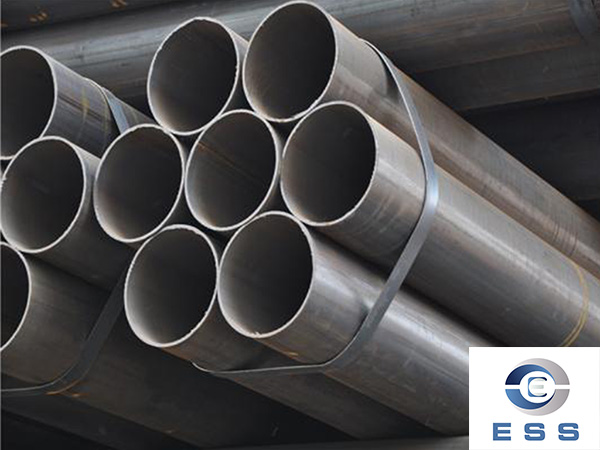The pores of large-diameter straight seam steel pipes not only affect the fineness of the weld seam of the pipe, causing leakage of the pipe, but also become the induction point of corrosion, which seriously reduces the strength and resistance of the weld seam.
The bubbles in the
erw pipe mostly occur in the center of the weld, the main reason is that hydrogen is still hidden in the weld metal in the form of bubbles. At the same time, moisture, dirt, scale and iron filings in flux, welding composition and coating thickness, steel plate surface quality and steel plate side plate treatment, welding process and steel pipe forming process may induce the generation of erw pipe pores.
Therefore, in order to eliminate this defect, it is necessary to clean up the rust, oil, water and moisture of the welding wire and the welding seam, and dry the flux to remove the moisture. In addition, increasing the current, reducing the welding speed, and slowing down the solidification speed of the molten metal are also effective.

The specific method is as follows:
1. Reduce the secondary magnetic field. In order to reduce the influence of magnetic bias, the connection position of the welding cable on the workpiece should be as far away from the welding terminal as possible to prevent part of the welding cable from generating a secondary magnetic field on the workpiece.
2. Technical aspect. The welding speed should be appropriately reduced or the current should be increased to reduce the crystallization speed of the metal in the molten pool and allow the gas to escape. At the same time, if the delivery position of the strip is unstable, it should be adjusted in time to avoid frequent fine-tuning of the front axle or standing still of the rear axle, and the gas is not easy to escape.
3. Flux composition. When the welding is rich in appropriate amount of CaF2 and SiO2, a large amount of H2 will be absorbed, and the generated HF is very stable and insoluble in liquid metal. This approach prevents the formation of hydrogen holes.
4. Flux accumulation thickness is generally 25-45mm. The maximum value of the accumulation thickness of the flux with large particle size and low density, otherwise it is the minimum value; the maximum value of the accumulation thickness under high current and low welding speed, otherwise it is the minimum value. In summer or when the air humidity is high, the recycled flux should be dried first to prevent moisture and other impurities in the flux from affecting soldering.
5. Steel plate treatment. In order to prevent sundries such as uncoiling, leveling and falling iron scale from entering the forming process, a cleaning program should be set up. Derusting and deburring equipment should be installed on the edge of the steel plate to reduce the probability of air holes. The removal equipment is best installed after the edger and disc shears.
6. Seam tracking. The welding seam form factor is too small, the weld seam shape is narrow and deep, the gas and inclusions are not easy to float up, and it is easy to form pores and slag inclusions. Usually the weld seam formation coefficient is controlled at 1.3-1.5, the maximum value is taken for thick-walled welded pipes, and the minimum value is taken for thin-walled pipes.













 Eastern Steel Manufacturing Co.,Ltd not only improve product production and sales services, but also provide additional value-added services. As long as you need, we can complete your specific needs together.
Eastern Steel Manufacturing Co.,Ltd not only improve product production and sales services, but also provide additional value-added services. As long as you need, we can complete your specific needs together.










